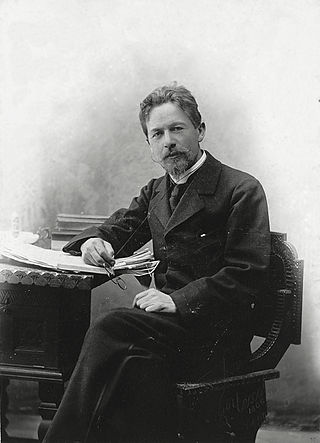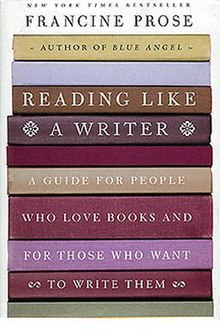Summary
- Chapter One: Close Reading
Prose discusses the question of whether writing can be taught. She answers the question by suggesting that although writing workshops can be helpful, the best way to learn to write is to read. Closely reading books, Prose studied word choice and sentence construction. Close reading helped her solve difficult obstacles in her own writing.
Prose encourages the reader to slow down and read every word. She reminds the reader that words are the "raw material out of which literature is crafted." Challenging the reader to stop at every word, she suggests the following question be asked: "What is the writer trying to convey with this word?"
Prose discusses how "the well made sentence transcends time and genre." She believes the writer who is concerned about what constitutes a well-constructed sentence is on the right path. Prose mentions the importance of mastering grammar and how it can improve the quality of a writer's sentence. In this chapter, she also discusses the use of long sentences, short sentences, and rhythm in prose.
Prose discusses that, just as with sentence construction, the writer who is concerned about paragraph construction is stepping in the right direction. She states that the writer who reads widely will discover there are no general rules for building a well-constructed paragraph, but "only individual examples to help point [the writer] in a direction in which [the writer] might want to go."
When determining point of view, Prose says audience is an important factor. She gives examples from literature of point-of-view variations. First person and third person are discussed, and even an example of writing fiction in second person is given.
Using examples from the works of Heinrich von Kleist and Jane Austen, Prose discusses how writers can develop characterization. She mentions that Kleist, in his "The Marquise of O—" ignores physical description of the characters, but instead "tells us just as much as we need to know about his characters, then releases them into the narrative that doesn't stop spinning until the last sentence . . ." Excerpts from other pieces of literature are used to show how action, dialogue and even physical description can help develop characterization.
Prose begins this chapter by dispelling the advice that writers should improve and clean up dialogue so it sounds less caustic than actual speech. She believes this idea on dialogue can be taken too far and that dialogue can be used to reveal not only the words on the surface, but the many motivations and emotions of the characters underneath the words.
Using examples from literature, Prose explains how one or two important details can leave a more memorable impression on the reader than a barrage of description.
Prose argues that gestures performed by fictional characters should not be "physical clichés" but illuminations that move the narrative.
- Chapter Ten: Learning from Chekhov
Prose gives examples of what she has learned from reading Anton Chekhov. As a creative writing teacher, she would disseminate advice to her students after reading their stories. As a fan of Chekhov, she would read his short stories and find examples of how he would successfully break the "rules" of fiction writing, contradicting something she recently told her students to do in their writing projects. Prose also discusses how Chekhov teaches the writer to write without judgment; she tells how Chekhov practiced not being the "judge of one's characters and their conversations but rather the unbiased observer."
- Chapter Eleven: Reading for Courage
Prose discusses the fears writers may have: revealing too much of themselves in their writing; resisting the pressures that writers must write a certain way; determining whether or not the act of writing is worth it when one considers the state of the world. She concludes her book by stating that the writer may fear creating "weeds" instead of "roses." Continuing the metaphor, she says reading is a way for the writer to see how other gardeners grow their roses.
- Books to Be Read Immediately
Prose includes a list of book recommendations, many of which have selections from those that are used as examples for the concepts she discusses.

Anton Pavlovich Chekhov was a Russian playwright and short-story writer who is considered to be one of the greatest writers of all time. His career as a playwright produced four classics, and his best short stories are held in high esteem by writers and critics. Along with Henrik Ibsen and August Strindberg, Chekhov is often referred to as one of the three seminal figures in the birth of early modernism in the theatre. Chekhov was a physician by profession. "Medicine is my lawful wife", he once said, "and literature is my mistress."
News style, journalistic style, or news-writing style is the prose style used for news reporting in media such as newspapers, radio and television.

The House of the Dead is a semi-autobiographical novel published in 1860–2 in the journal Vremya by Russian author Fyodor Dostoevsky. It has also been published in English under the titles Notes from the House of the Dead, Memoirs from the House of the Dead and Notes from a Dead House, which are more literal translations of the Russian title. The novel portrays the life of convicts in a Siberian prison camp. It is generally considered to be a fictionalised memoir; a loosely-knit collection of experiences, events and philosophical discussion based on Dostoevsky's experiences as a prisoner, organised around theme and character rather than plot. Dostoevsky spent four years in a forced-labour prison camp in Siberia following his conviction for involvement in the Petrashevsky Circle. This experience allowed him to describe with great authenticity the conditions of prison life and the characters of the convicts.
In literature and writing, stylistically elements are the use of any of a variety of techniques to give an auxiliary meaning, ideas, or feeling to the literalism or written.
Narration is the use of a written or spoken commentary to convey a story to an audience. Narration is conveyed by a narrator: a specific person, or unspecified literary voice, developed by the creator of the story to deliver information to the audience, particularly about the plot: the series of events. Narration is a required element of all written stories, presenting the story in its entirety. However, narration is merely optional in most other storytelling formats, such as films, plays, television shows, and video games, in which the story can be conveyed through other means, like dialogue between characters or visual action.

Constance Clara Garnett was an English translator of nineteenth-century Russian literature. She was the first English translator to render numerous volumes of Anton Chekhov's work into English and the first to translate almost all of Fyodor Dostoevsky's fiction into English. She also rendered works by Ivan Turgenev, Leo Tolstoy, Nikolai Gogol, Ivan Goncharov, Alexander Ostrovsky, and Alexander Herzen into English. Altogether, she translated 71 volumes of Russian literature, many of which are still in print today.
Fiction writing is the composition of non-factual prose texts. Fictional writing often is produced as a story meant to entertain or convey an author's point of view. The result of this may be a short story, novel, novella, screenplay, or drama, which are all types of fictional writing styles. Different types of authors practice fictional writing, including novelists, playwrights, short story writers, radio dramatists and screenwriters.
Show, don't tell is a technique used in various kinds of texts to allow the reader to experience the story through actions, words, subtext, thoughts, senses, and feelings rather than through the author's exposition, summarization, and description. It avoids adjectives describing the author's analysis, but instead describes the scene in such a way that readers can draw their own conclusions. The technique applies equally to nonfiction and all forms of fiction, literature including haiku and Imagism poetry in particular, speech, movie making, and playwriting.
The rhetorical modes are a long-standing attempt to broadly classify the major kinds of language-based communication, particularly writing and speaking, into narration, description, exposition, and argumentation. First attempted by Samuel P. Newman in A Practical System of Rhetoric in 1827, the modes of discourse have long influenced US writing instruction and particularly the design of mass-market writing assessments, despite critiques of the explanatory power of these classifications for non-school writing.
A narrative hook is a literary technique in the opening of a story that "hooks" the reader's attention so that they will keep on reading. The "opening" may consist of several paragraphs for a short story, or several pages for a novel, but ideally it is the opening sentence in the book.
In literature and other artistic media, a mode is an unspecific critical term usually designating a broad but identifiable kind of literary method, mood, or manner that is not tied exclusively to a particular form or genre. Examples are the satiric mode, the ironic, the comic, the pastoral, and the didactic.
A fiction-writing mode is a manner of writing with its own set of conventions regarding how, when, and where it should be used.

"A Good Man Is Hard to Find" is a Southern gothic short story first published in 1953 by author Flannery O'Connor who, in her own words, described it as "the story of a family of six which, on its way driving to Florida [from Georgia], is slaughtered by an escaped convict who calls himself the Misfit".
Concision is a communication principle of eliminating redundancy.
"A Misfortune", sometimes translated "Misfortune", is an 1886 story by Anton Chekhov. First published in Novoye Vremya, the story concerns Sofya Petrovna, the young wife of a country notary, whose attempts to turn away a suitor only expose her own desire for him and drive her toward an affair. The main theme is sexual enthrallment, a frequent concern in Chekhov's work during this period.
In literature, pace, or pacing is the speed at which a story is told—not necessarily the speed at which the story takes place. The number of words needed to write about a certain event does not depend upon how much time the event takes to happen; it depends upon how important that moment is to the story. The pace is determined by the length of the scenes, how fast the action moves, and how quickly the reader is provided with information. It is also sometimes dictated by the genre of the story: comedies move faster than dramas; action adventures move faster than suspense. A dragging pace is characteristic of many novels turned down by publishers, and of some that find their way into print but not into the hearts and recommendations of readers. Manuscripts that move too slowly usually discourage readers from reading on.
"The Student" is a short story by Anton Chekhov first published on April 16, 1894, in the newspaper Russkie Vedomosti. It tells of a clerical student returning home on a cold Good Friday evening who stops at a fire and meets two widows. He recounts to them the canonical Gospels' story of the Denial of Peter and upon finishing, notes that these two women are deeply moved, leading him to conclude that all of history is connected through truth and beauty.

"Anna on the Neck" is an 1895 short story by Anton Chekhov
"Ariadne" is an 1895 short story by Anton Chekhov.

"In the Cart" is an 1897 short story by Anton Chekhov, also translated as "The Schoolmistress".






